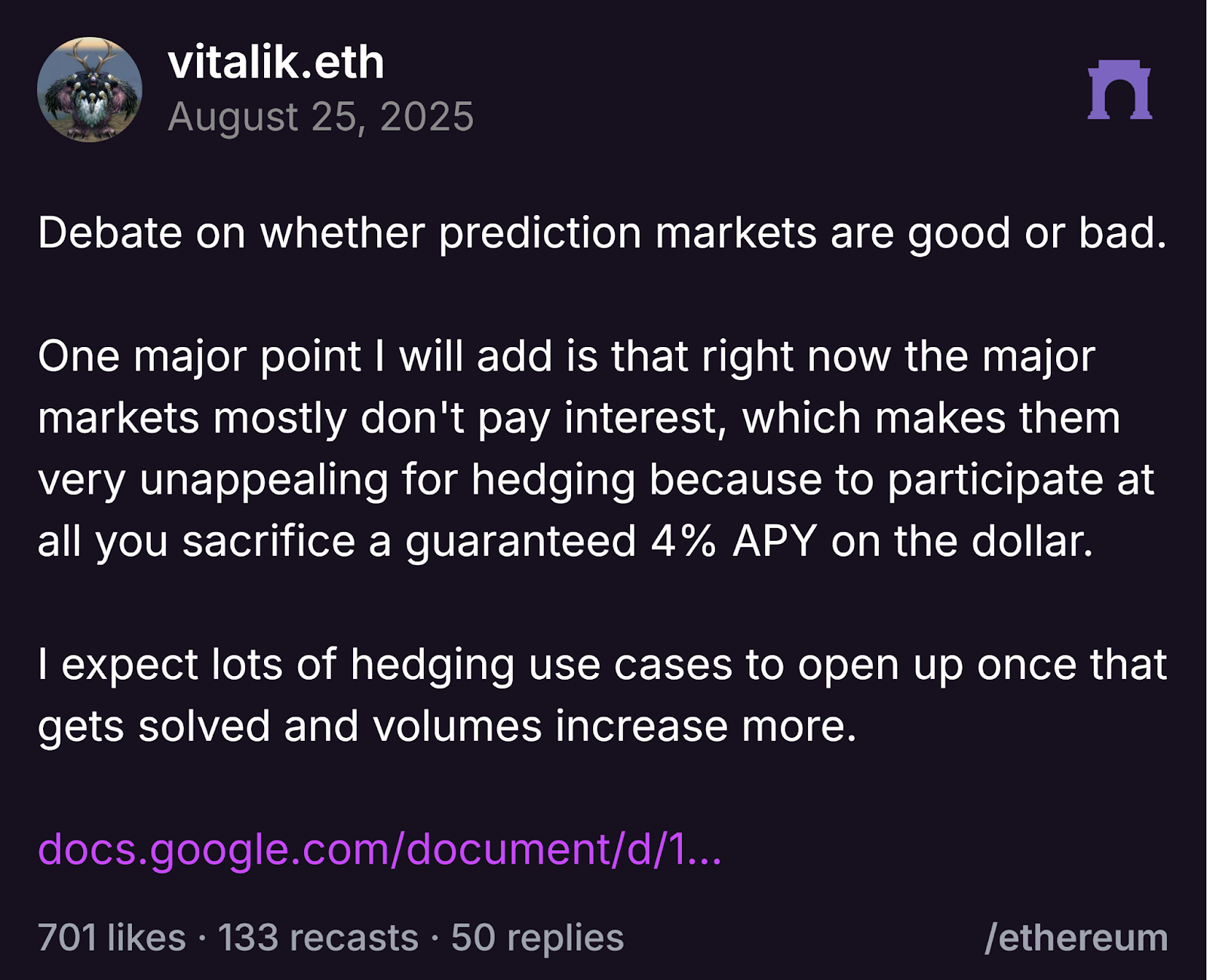Table of Contents
The Limitations of Prediction Markets in Hedging
Prediction markets, platforms where participants trade on the outcomes of future events, have come under scrutiny for their ineffectiveness as hedging tools. Ethereum co-founder Vitalik Buterin highlights a significant flaw: these markets lack the ability to earn interest, rendering them less attractive for risk management compared to traditional financial products.
In a recent post on Farcaster, Buterin elaborated on how participating in prediction markets often means forgoing potential annual yields of approximately 4% from stable, dollar-based assets. This trade-off deters individuals seeking robust hedging mechanisms, as they miss out on earning interest in favour of speculative trading.
A Decline in Trading and User Dynamics
Polymarket, one of the most prominent prediction markets, reported a trading volume of US$1.06 billion (AU$1.63 billion) in July, a drop from US$1.16 billion (AU$1.79 billion) in June. Despite this decline in trading volume, the platform saw an increase in active users, climbing from 242,340 to 286,730. However, the average size of trades decreased, suggesting a shift in trader behaviour. Analysts have noted that Polymarket is diversifying its offerings beyond its initial focus on politics.
This development raises concerns about the broader ability of prediction markets to fulfil their intended role. Buterin’s comments underline a crucial challenge: the limited features of prediction markets compared to conventional financial tools, such as interest earnings and broader market participation. The prevalence of speculators, rather than genuine hedgers, contributes to the inefficacy of these platforms in addressing risk management needs.

Automated Trading Strategies Exploiting Inefficiencies
Research has revealed that automated trading techniques are capitalising on the inefficiencies present in prediction markets. Between April 2024 and April 2025, automated accounts on Polymarket reportedly generated over US$40 million (AU$61.7 million) in arbitrage profits by exploiting mispriced bets. Notably, some of the largest accounts extracted substantial profits through numerous trades, particularly in markets related to politics and sports.
Buterin advocates for the potential to enhance the appeal of prediction markets by integrating features that would allow users to earn interest while hedging. However, these platforms face formidable challenges, such as regulatory scrutiny, competition, and ongoing debates over fairness as they expand.
Conclusion
While prediction markets like Polymarket are gaining user traction, their efficacy as hedging tools remains questionable due to the lack of interest-bearing capabilities. For them to evolve and serve as reliable risk management tools, innovative features must be incorporated. Until such changes are implemented, the industry will continue to struggle with challenges that undermine its utility for serious hedgers.
For further insights on the evolving landscape of cryptocurrency and trading, stay tuned to our updates.

